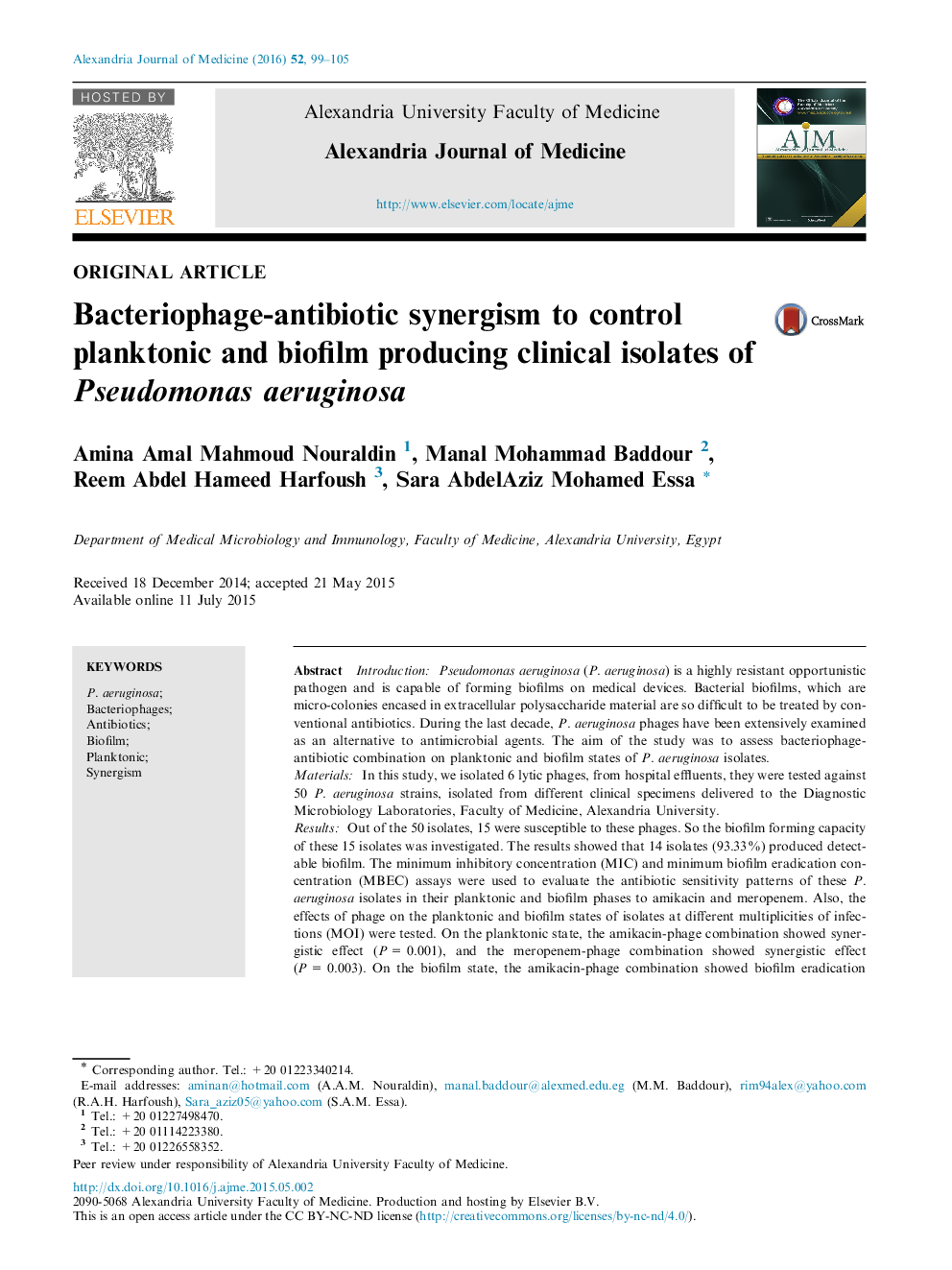| کد مقاله | کد نشریه | سال انتشار | مقاله انگلیسی | نسخه تمام متن |
|---|---|---|---|---|
| 3431561 | 1594454 | 2016 | 7 صفحه PDF | دانلود رایگان |
IntroductionPseudomonas aeruginosa (P. aeruginosa) is a highly resistant opportunistic pathogen and is capable of forming biofilms on medical devices. Bacterial biofilms, which are micro-colonies encased in extracellular polysaccharide material are so difficult to be treated by conventional antibiotics. During the last decade, P. aeruginosa phages have been extensively examined as an alternative to antimicrobial agents. The aim of the study was to assess bacteriophage-antibiotic combination on planktonic and biofilm states of P. aeruginosa isolates.MaterialsIn this study, we isolated 6 lytic phages, from hospital effluents, they were tested against 50 P. aeruginosa strains, isolated from different clinical specimens delivered to the Diagnostic Microbiology Laboratories, Faculty of Medicine, Alexandria University.ResultsOut of the 50 isolates, 15 were susceptible to these phages. So the biofilm forming capacity of these 15 isolates was investigated. The results showed that 14 isolates (93.33%) produced detectable biofilm. The minimum inhibitory concentration (MIC) and minimum biofilm eradication concentration (MBEC) assays were used to evaluate the antibiotic sensitivity patterns of these P. aeruginosa isolates in their planktonic and biofilm phases to amikacin and meropenem. Also, the effects of phage on the planktonic and biofilm states of isolates at different multiplicities of infections (MOI) were tested. On the planktonic state, the amikacin-phage combination showed synergistic effect (P = 0.001), and the meropenem-phage combination showed synergistic effect (P = 0.003). On the biofilm state, the amikacin-phage combination showed biofilm eradication in 50% of the isolates (P = 0.003). On the other hand, the meropenem-phage combination showed biofilm eradication in 14.3% of the strains.ConclusionThe combination of phage and antibiotics could have potentially more benefits on P. aeruginosa planktonic and biofilm states than just using phages or antibiotics alone.
Journal: Alexandria Journal of Medicine - Volume 52, Issue 2, June 2016, Pages 99–105
